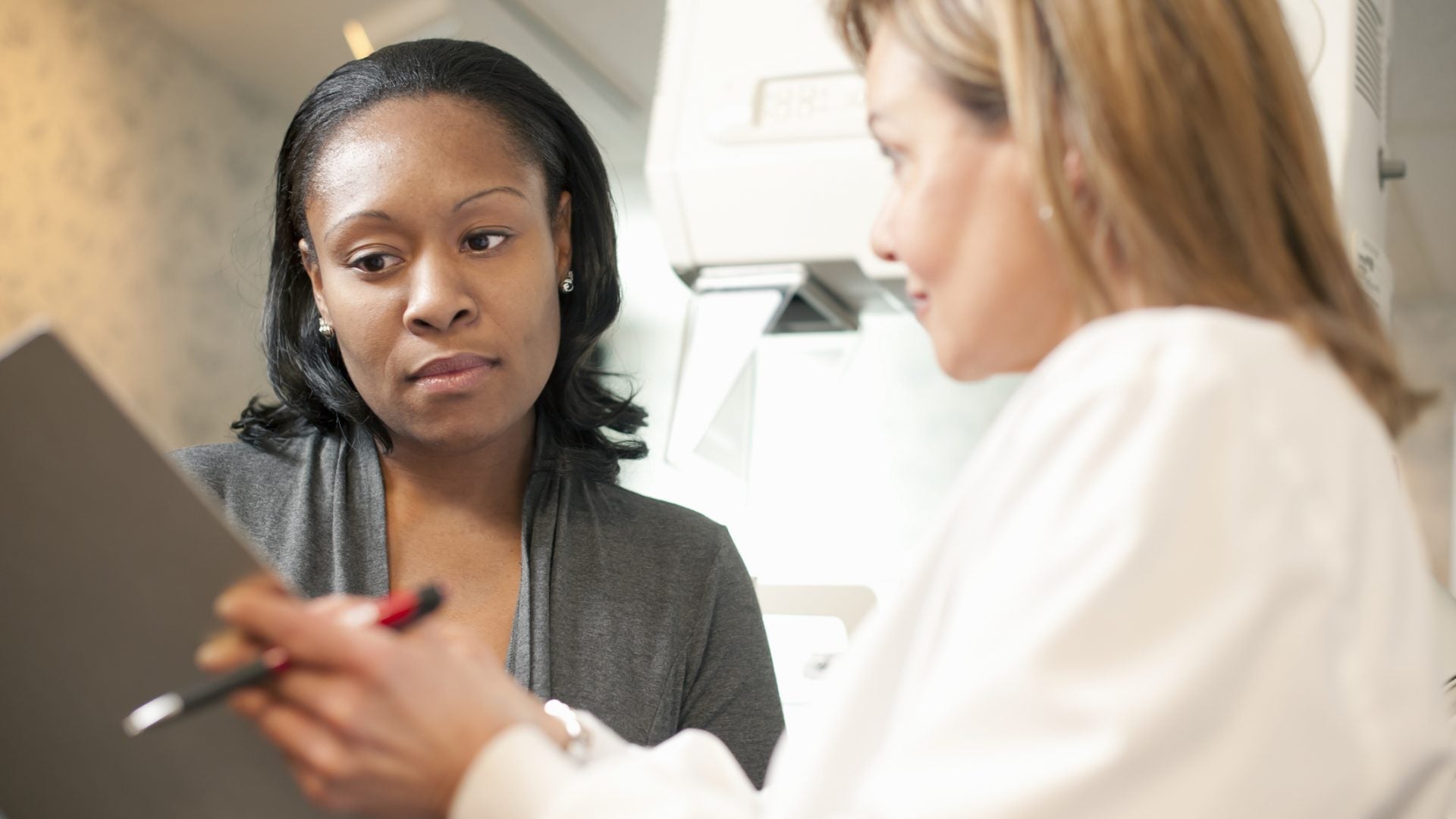
Breast cancer remains the second most common cancer among women and has the second highest incidence of death, according to the CDC. While getting a mammogram can be a life-saving step in early detection for women, some women are now postponing getting a mammogram after doctors have noticed a puzzling COVID-19 vaccine side effect: lymph node swelling showing up in the mammograms of recently vaccinated women.
According to Dr. Abisola Olulade, a board certified family medicine physician affiliated with Sharp Rees-Stealy Medical Group in San Diego, California, “Side effects are actually a good thing and a sign that your immune system is responding well to the vaccine.”
She continues, “They typically go away after a few days. However, breast cancer can cause swollen lymph nodes underneath the armpit as well. The mammogram may not be able to distinguish between lymph node swelling from the vaccine versus cancer. For that reason, some have suggested waiting 4 to 6 weeks after your final vaccine dose before getting a mammogram. However I would recommend that you discuss this with your medical provider to get some guidance before canceling or postponing your mammogram.
But COVID-19 vaccine side effects is just one of many reasons a woman may want to wait to get a mammogram. For starters, you may be too young, if there isn’t an increased risk of breast cancer in your family. history. The American Cancer Society recommends that women with an average risk can choose to have a mammogram from age 40 to 44. At 45, women should get a mammogram every year, and then at 55 and older, one every two years, or continue getting one every year — her choice. A woman should then continue doing mammograms as long as she’s healthy and expected to live another 10 years.
“In asymptomatic patients with an average risk of developing breast cancer screening mammogram is not recommended before the age of 40,” says Dr. Olulade. “In this age group patients have increased breast density and mammogram is not as good for finding breast cancer. There may also be a risk of false positive findings in this setting. Women are considered to be average risk if they don’t have a strong family history of breast cancer or genetic mutation known to increase risk of breast cancer, if they have never had breast cancer before or chest radiation therapy before the age of 30. It is always best to determine your risk with your doctor by age 30.”
For those still unsure of breast cancer symptoms and when they should be getting checked, Dr. Olulade outlines the most common mammogram myths below.
Mammograms cause cancer. This is actually a common myth that I hear. Mammograms use very small doses of radiation and the risk of harm is extremely low. The benefit cancer detection outweighs the extremely small risk of harm from radiation exposure.
You don’t need to get a mammogram if no one in your family has had breast cancer. A lot of patients get falsely reassured by the fact that no one in their family had breast cancer. This isn’t a reason to not get the mammogram. Family members may not keep up with their regular screening and also family history is not the only risk factor for breast cancer. In fact, most women that get breast cancer do not have a family history of this.
It’s embarrassing to get a mammogram. Because mammograms involve imaging of the breasts a lot of women feel bashful about getting this test done. However, this is done in a very private setting and with trained professionals. Every effort is made and should be made to make the patient feel comfortable. Do not let your fear being embarrassed prevent you from getting a mammogram. You should feel proud that you are taking care of yourself by trying to get a mammogram. Remember that early detection saves lives.
It’s extremely painful to get a mammogram. Different people have different pain thresholds but getting a mammogram involves minimal to no pain for most people and if it is painful it is typically only painful for a short period of time.
Getting a mammogram is scary because they are “going to find something scary.” A lot of people avoid screening because they’re worried that something is going to be found. But we have to remember that most screening tests are normal and that early detection is important. It’s better to get something found early than to wait and find something in a later stage which can be much harder to treat.